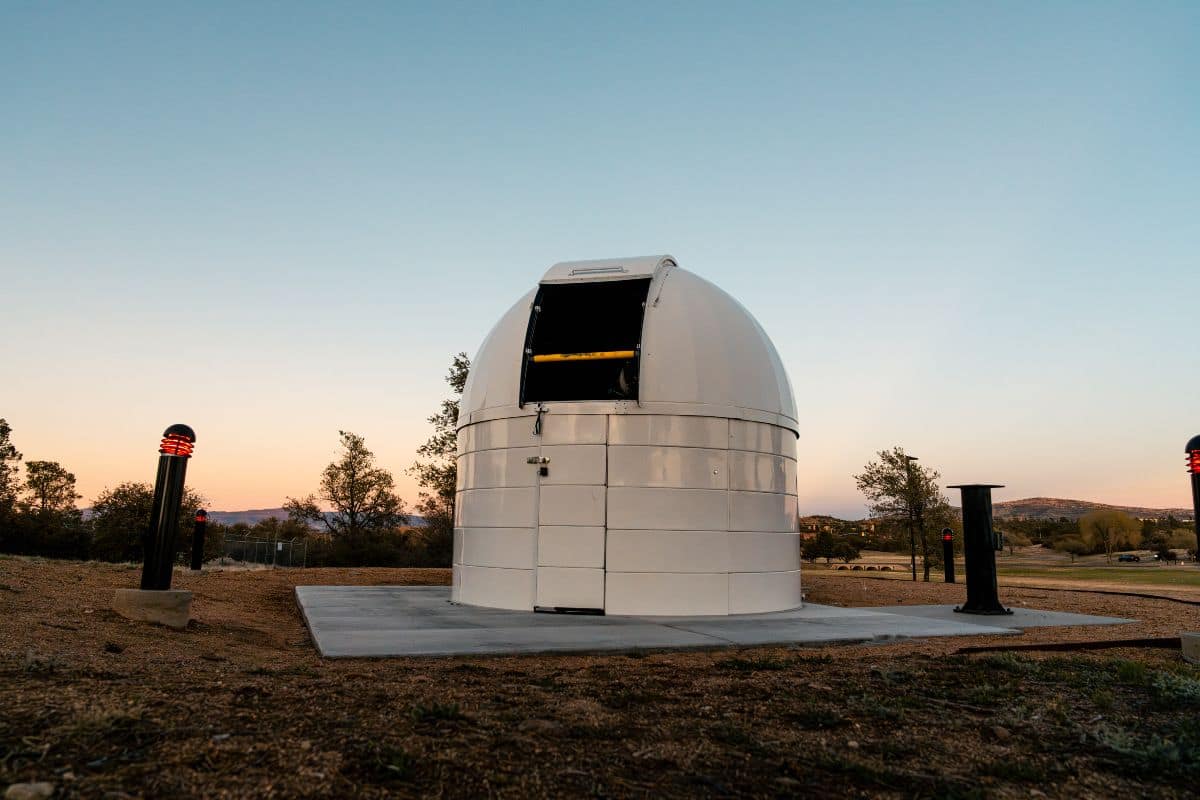New 20-Inch Telescope Elevates Embry-Riddle’s Space Physics Program

Embry-Riddle Aeronautical University unveiled a new addition to its Physics and Astronomy Department at a ceremony on Monday, April 1, 2024: a new 20-inch Planewave Optics telescope, which will significantly improve the educational and research capabilities at the Prescott Campus.
“The optics for this line of telescopes are spectacular,” said Dr. Noel Richardson, assistant professor of Physics and Astronomy. “These telescopes are being used by professionals throughout the world right now and will allow our students to have a higher-quality education in observational astrophysics.”
A major increase in size over the university’s previous 0.4-meter telescope, the new instrument — to be housed in the campus’s Observatory Complex dome alongside the 0.4-meter device, which will still be operational and available for use — will allow for high-quality and multifaceted observational experiences for students.
The new equipment will provide improved research capabilities for students like Kaitlyn Casciotti, an Astronomy junior who leads the Prescott Observational Team for Analyzing Telescopically Observed Spectra (POTATOS), gathering data on massive stars encircled by hot disks emitting hydrogen as they rotate, known as “Be star” decretion disks.
“The new telescope at the observatory has given us the opportunity to use more modern, automated equipment to collect better data,” said Casciotti. “A larger observatory with better tracking software also increases the amount of data we are able to collect per observing session, leading to better results.”
Richardson added that future student projects are in development focusing on binary systems and how disks will grow and change around hot stars.
“With the older telescope, students are measuring the changes in brightness with time in an eclipsing binary,” explained Richardson. “At the same time, they can measure the spectrum of stars with the new telescope. This tells us how fast the stars are moving around each other to make the full solution for the eclipsing system.”
Long-term plans for the equipment include fully “robotizing,” or programming the telescope to automatically take data depending on local weather measurements, and thus maximize data-collection opportunities.
“While we are able to remotely operate here on campus, robotizing the telescope will allow for data to be taken on any clear night with observations scheduled through a prioritized queue,” said Richardson. “Given the weather in Prescott, and Arizona in general, we can expect many student research projects to utilize the telescope in the future.”

 Keaton S. Ziem
Keaton S. Ziem